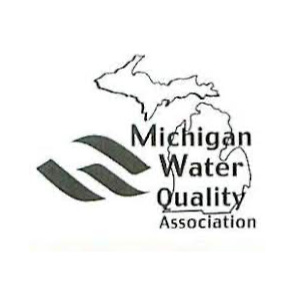What is A Water Analysis?
The USGS lists the process as “Involving the chemical, physical, and biological testing of water to assess its quality and suitability for various uses, including drinking, industrial, and environmental purposes.”
Water tests show everything in your water. This includes minerals, metals, and possible contaminants. While it might sound technical, analyzing water is actually pretty straightforward. Whether you’re a homeowner, business owner, or just curious, we’ll explain the basics in simple terms.
Why Test Your Water
Every time you turn on your tap, you interact with water that has traveled through countless pipes and possibly through ground soil if you have well water. Along that journey, your water can pick up various substances – some good, some not so good. “Water quality analysis is essential for understanding the health of water bodies and ensuring the safety of water for human consumption, recreation, and ecosystem preservation.” says the EPA.
Regular testing identifies potential health risks, explains strange tastes or odors, and can even save your appliances from premature aging. Think of it like getting a detailed map of what’s in every drop, helping you make informed decisions about treatment options.
The Usual Suspects
The EPA has these thoughts on water contaminants “Common contaminants found in drinking water include microbes, disinfectants, disinfection byproducts, inorganic chemicals such as lead and arsenic, and organic chemicals like pesticides and industrial solvents.”
Since we’ve had our introduction, let’s meet the characters commonly found in water:
- Hard Minerals like Calcium and Magnesium leave spots on dishes and build up in pipes.
- Iron leads to Rust Stains and Metallic Tastes.
- Uninvited Guests like Bacteria and Nitrates Can Affect Your Health.
- Chlorine might make your water smell like a swimming pool.
Some additions to your water are harmless, while others need attention. Even invisible factors like pH levels can impact both your health and home. Understanding these common contaminants helps you recognize why certain problems occur and how to address them effectively.
How It’s Done
“A comprehensive water analysis measures various parameters such as pH, turbidity, dissolved oxygen, and the presence of harmful pathogens or chemicals.” says NEMI. Today’s testing combines simple on-site checks with advanced laboratory techniques.
While simple tests employ strips that change color to gauge hardness or chlorine, thorough examination necessitates professional lab apparatus capable of identifying microscopic pollutants and accurately determining the amounts of different compounds.
From instant results to detailed reports, each testing method serves a specific purpose, working together to create a complete picture of your water quality. Think of it as using both a magnifying glass and a microscope to examine every aspect of your water.
Making Sense of the Numbers
“Interpreting water test results involves understanding the units used, such as parts per million (ppm) or milligrams per liter (mg/L), and comparing these values to health-based standards like Maximum Contaminant Levels (MCLs), set by the EPA to protect human health.” the EPA explains.
When your report shows a hardness level of 7 grains, it means you have hard water. Any level over 3.5 indicates hard water. A pH of 6.5 is also important. You should aim for a neutral pH of 7.0. Even an iron reading of 0.3 mg/L is significant. This level is where you might start seeing stains. No chemistry degree is required – just practical knowledge about what these measurements mean for your everyday water use.
Fixing What’s Wrong
You’ve received your water test results, so what’s the subsequent step? If the findings suggest certain issues, don’t worry; straightforward remedies exist for most water-related problems.
Think of water treatment as a custom prescription for your specific needs. The USGS shares that “Water treatment technologies, such as reverse osmosis and activated carbon filters, are effective at removing a wide range of pollutants, including dissolved solids and volatile organic compounds.”
- Battling with stains caused by hard water? A water softener might be the remedy you need.
- Have you dealt with the unpleasant taste and odor of chlorine? Carbon filtration is your solution.
- Does your iron leave marks behind? Iron filters are an easy fix.
From point-of-use reverse osmosis filters to advanced whole-home systems, there is a solution for every water problem. You won’t need to guess or try random fixes.
Timing is Everything
Just like regular health check-ups, your water needs periodic testing to ensure consistent quality. Well, water typically requires annual testing, while city water might need less frequent checks. Some situations, like changes in color, taste, or smell, need immediate testing. Staying proactive with water testing helps catch potential issues before they become major problems “Testing water regularly is crucial after events like flooding or any significant change in taste, color, or smell, as these can signal contamination.” shares the EPA
Final Thoughts
Whether you’re dealing with hard water spots, concerned about taste, or just want peace of mind, knowledge truly is power. Regular testing and understanding your results empower you to make informed decisions about treatment needs. Remember, good water isn’t just about taste – it’s about protecting your health, your home, and your investment in both. The CDC states, “By staying informed about local water issues and regularly testing your water, you can address potential risks and maintain a safe supply of drinking water.”

